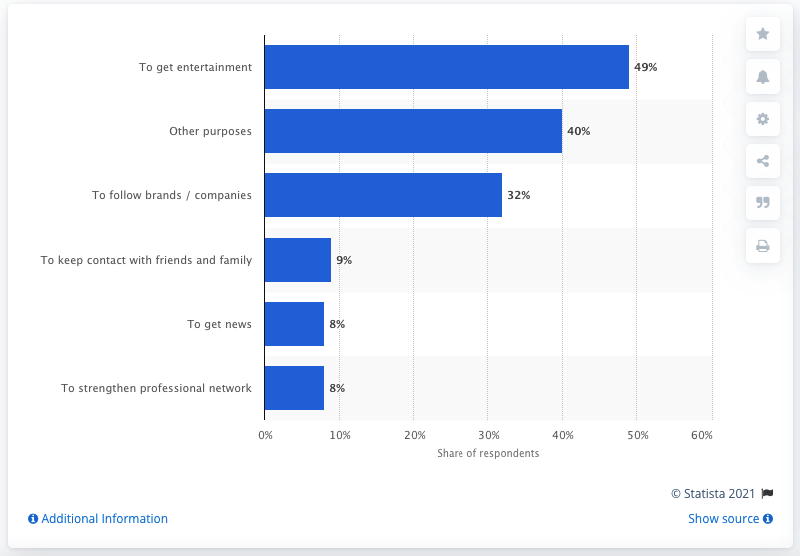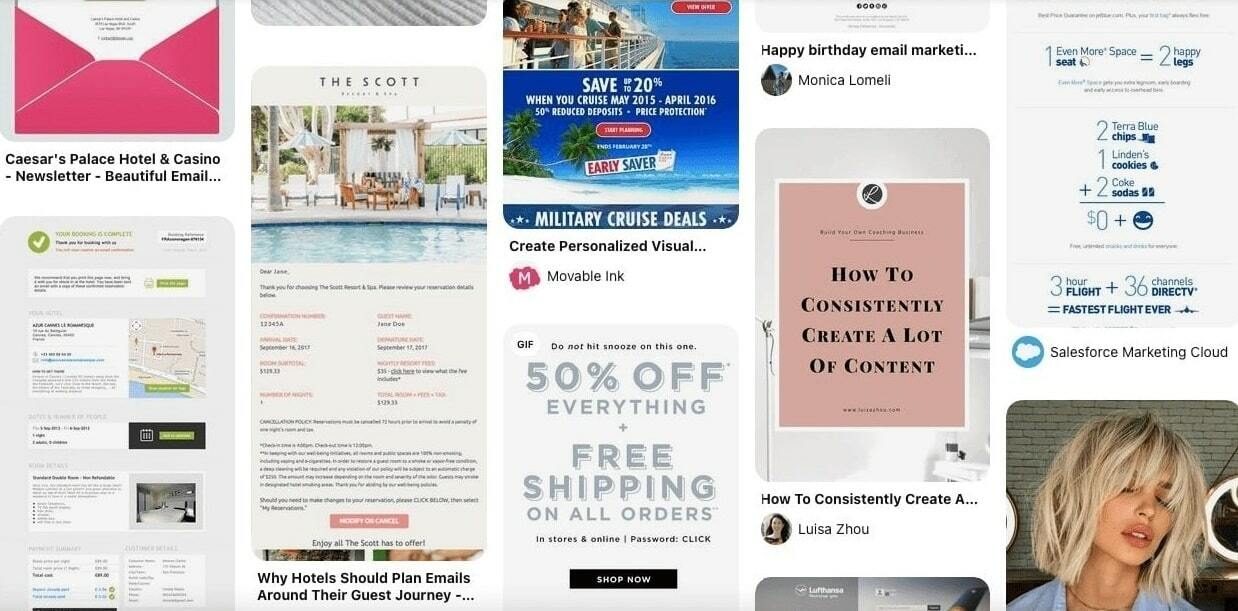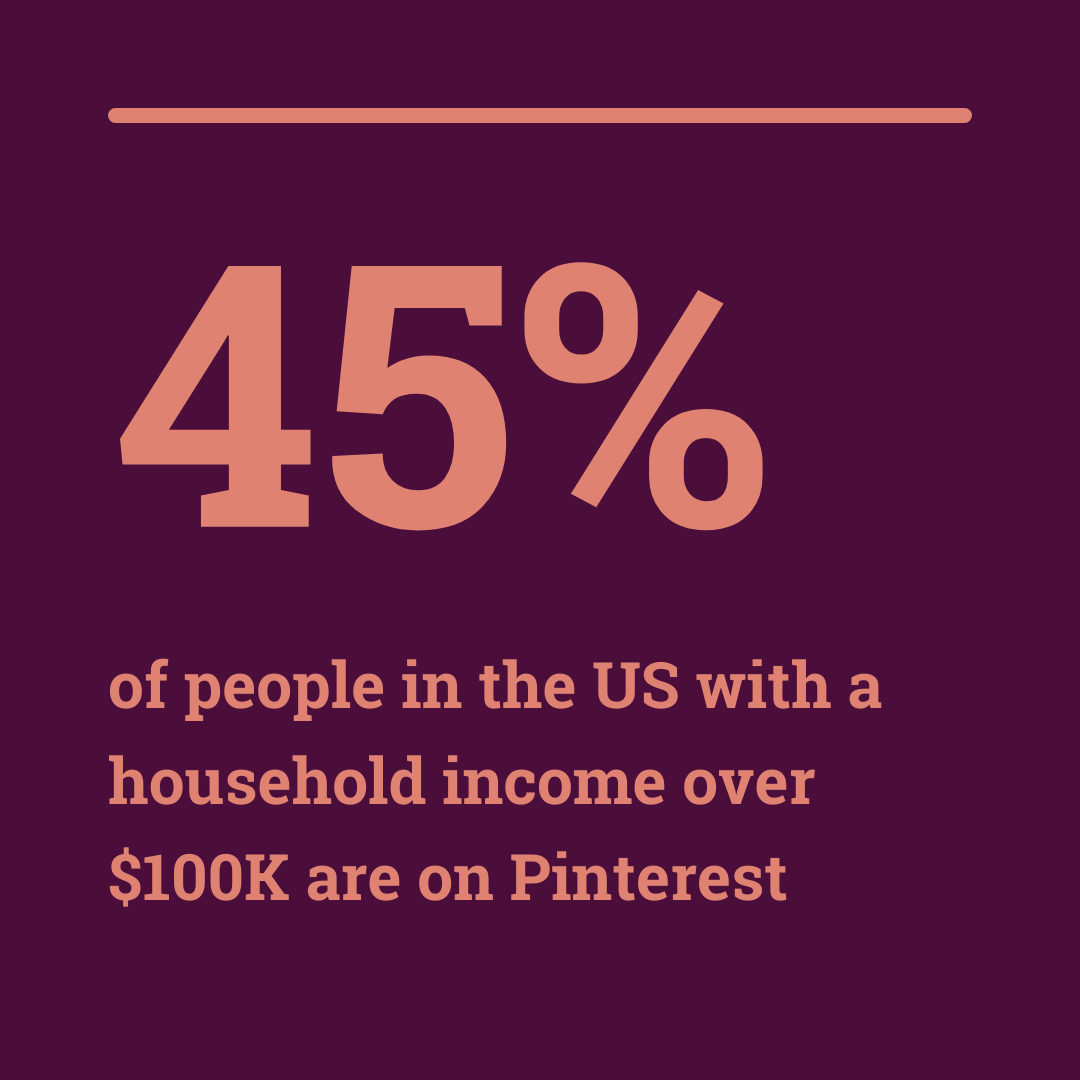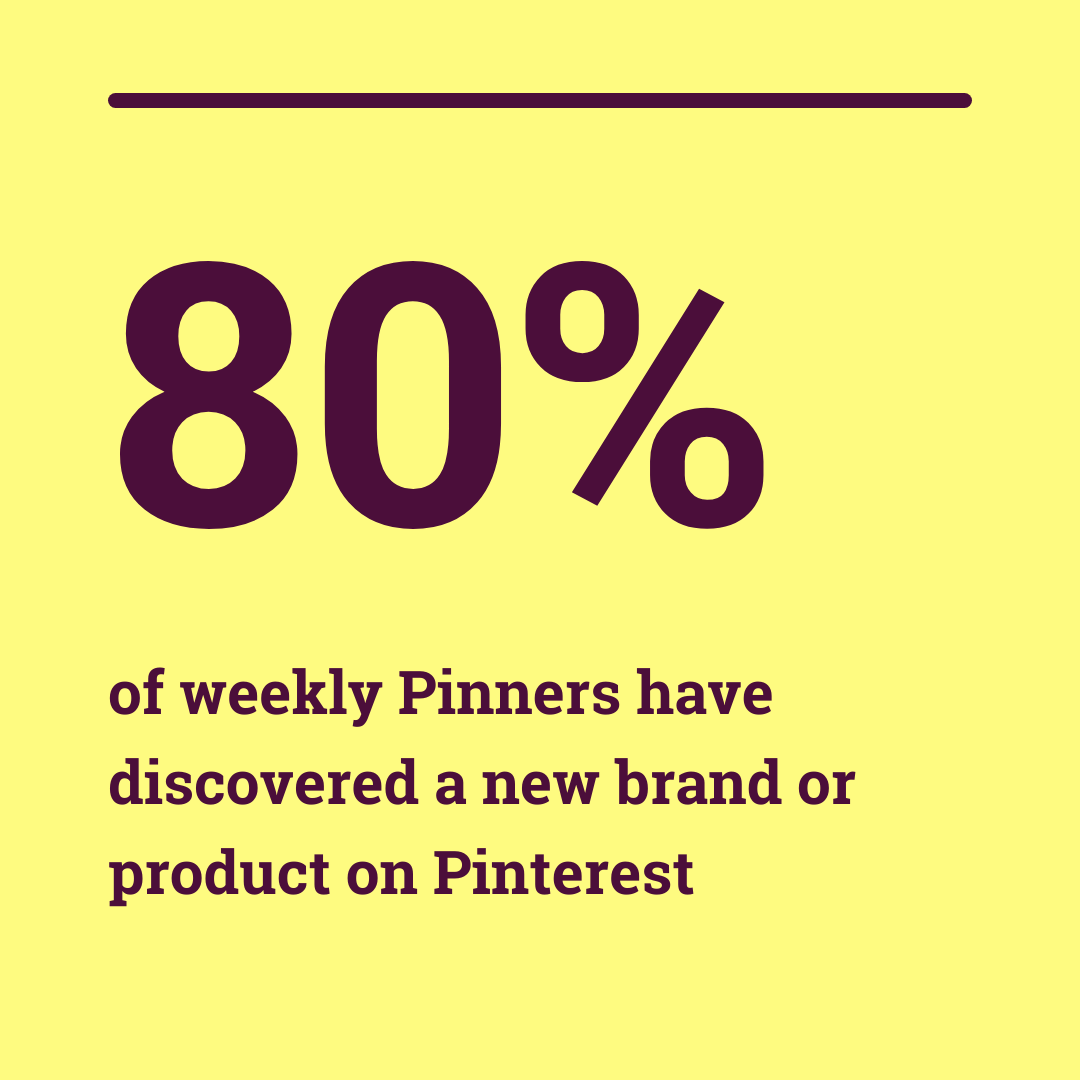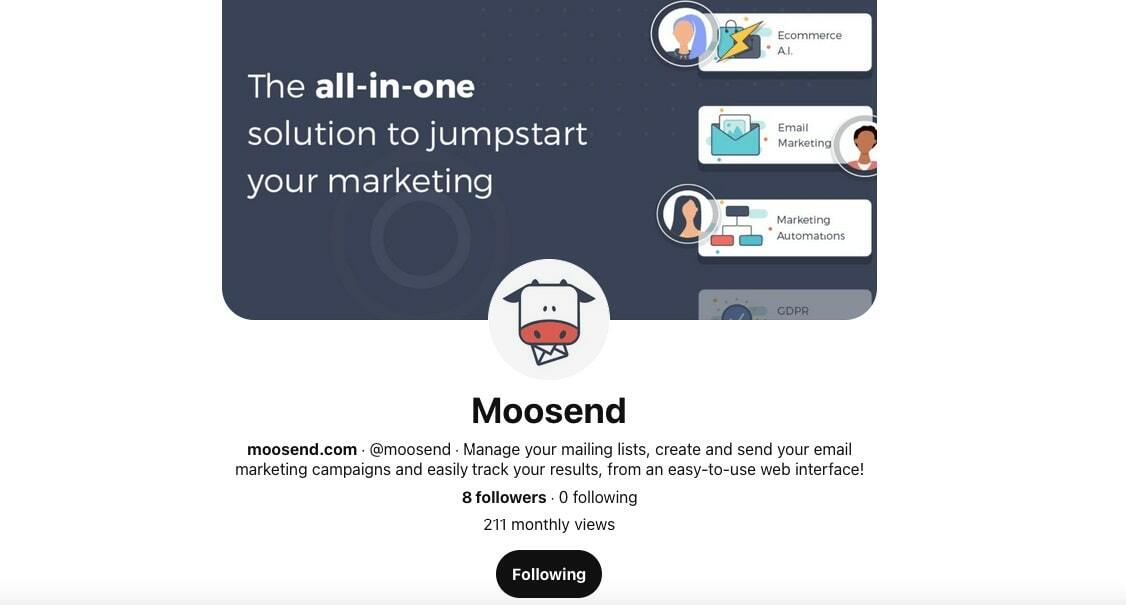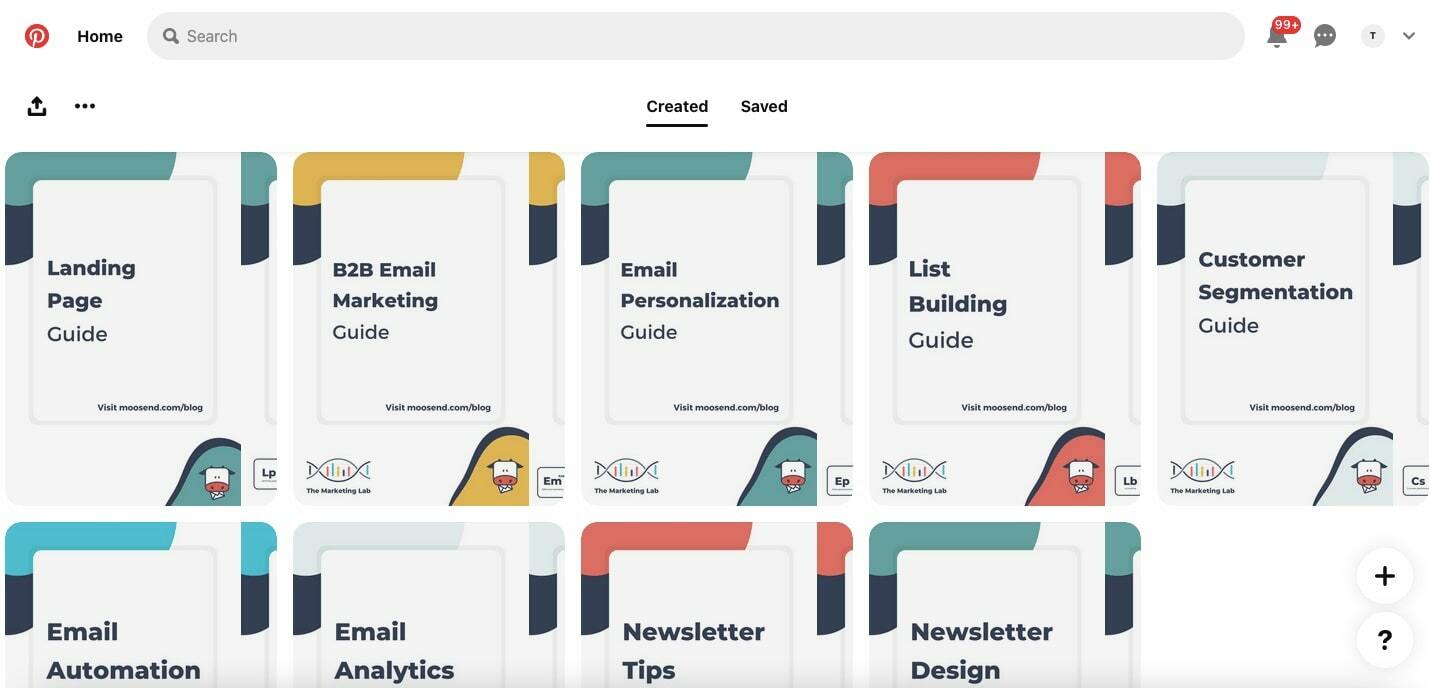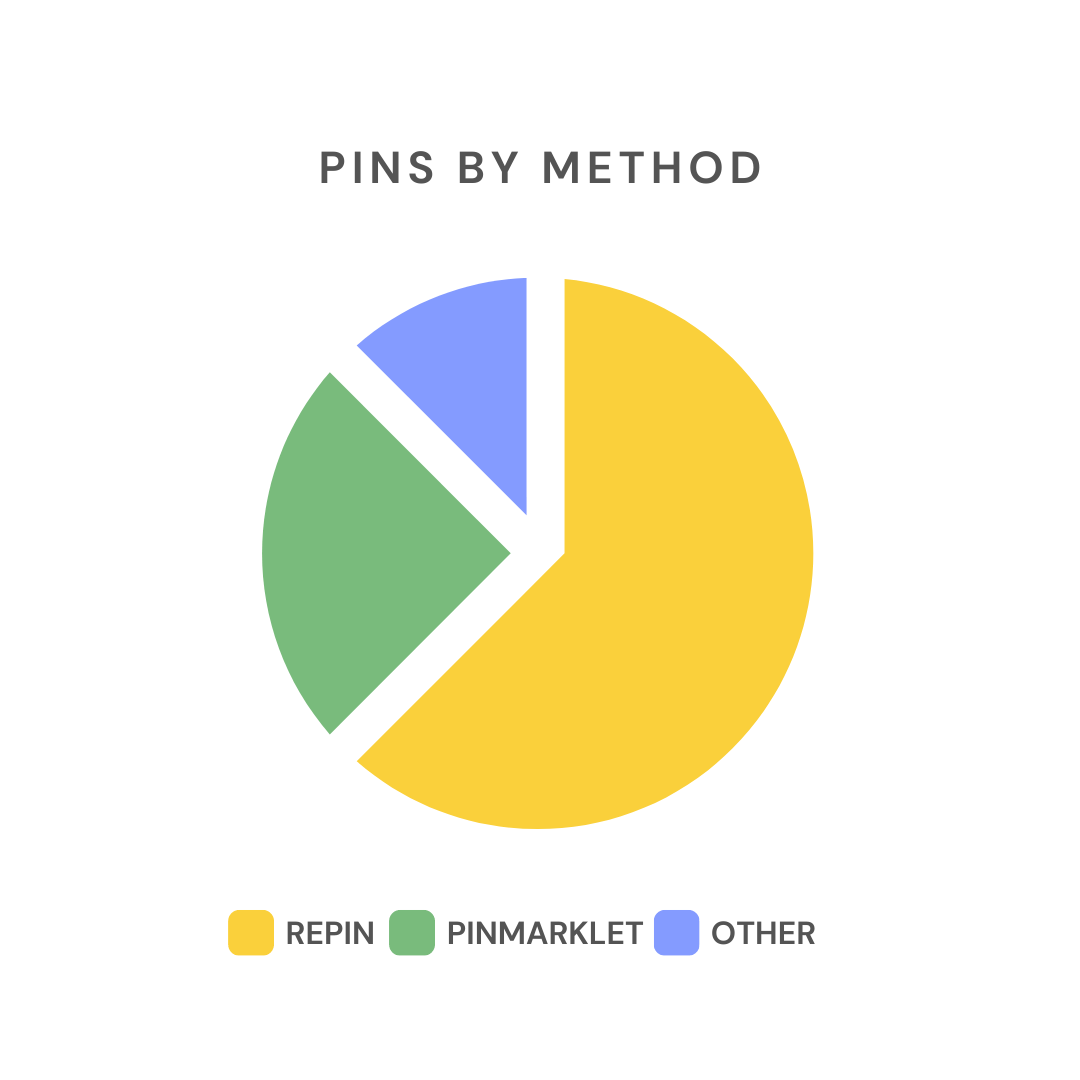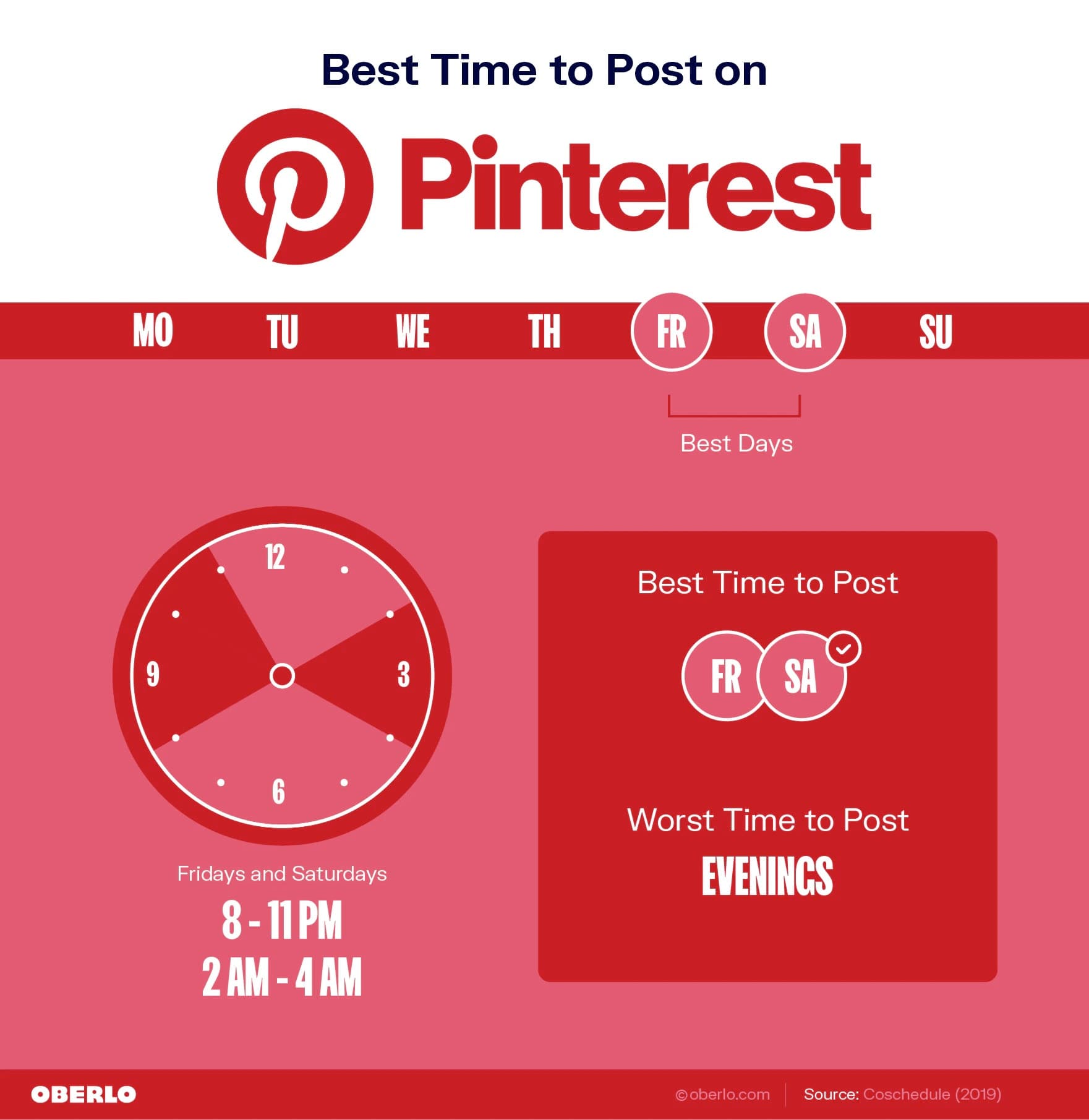Start Exploring Keyword Ideas
Use Serpstat to find the best keywords for your website
How to use Pinterest for your B2B Marketing Strategy

With 454 million monthly active users worldwide, not using it as part of your social media marketing strategy could be a huge mistake.
As we all know, visual content has many benefits, as tends to be be easier to digest. Not to mention that, if done correctly, visual content can drive traffic, boost your social shares and overall engagement, helping you stay on top of people's minds and create brand awareness.
But how is a B2B company going to adapt to Pinterest? And is there a way to make it work for you?
Let's get started.
Why Pinterest Marketing?
Now, as with all things social, Pinterest has a search bar at the top of the page. This search bar can turn the social media platform into a mini-search engine, where Pinterest users can search for anything, from a brand's name to the latest hashtag that's taken over the digital world.
Users can create boards simply by pinning their favorite content, making them either private or public. The latter means that other users can follow them, re-pin their pins, and then get suggestions related to the pins on their feed.
However, there is another reason why you should use Pinterest as a part of your social media marketing and content marketing efforts:
But let's take a look at this one as well:
Pinterest Through Email Marketing
It's not, though.
Pinterest users are a fantastic source of referral traffic and leads. So, why not promote your Pinterest account through your email marketing efforts?
Generally speaking, promoting your social media through your email marketing and vice versa is a fantastic way to gain exposure, brand visibility, and, obviously, more followers.
So, let's assume that you create your social media content and your brand new Pinterest board. You can share it on your Facebook page and urge others to do the same as you, correct?
You can also promote your brand new content through your email marketing campaigns and boost your follower count and interaction. Just segment your audience, see what each person would love to see, when it comes to your social media content, and pick out an email template builder that will help you create email templates that will make your social media content look natural - almost like a natural continuation of your brand overall.
If social media content - and that includes Pinterest - can open a dialogue, email marketing can continue it. So, urge your followers to subscribe to your email, if they haven't done so already, give them some exclusive, spot-on content, and nudge them in the right direction by asking them to share your email with their social circle.
That way, you'll be able to continue the dialogue with your subscribers - old and new -, turn old subscribers into ambassadors and promote your product and services more effectively.
SEO Rankings and Pinterest's Algorithm
But all search engines work through algorithms, whether they're on social media or not. Which means that you will need to understand how this algorithm can boost your content and help you build your personal brand through visibility.
First of all, you'll need to create relevant content that will belong to the Pinterest board you've saved it on. That way, it'll be that much easier for Pinterest users to bump into your content.
Secondly, don't think that Pinterest is a place where you can just dump content. You will need to invest in quality rather than quantity, as with every other social media platform.
Let's assume that you start a blog, and you want to promote it through Pinterest. You wouldn't create blog posts that have zero value, and you wouldn't use your Rich Pins to update your Pinterest profile in real-time without engaging and relevant content.
Are all of the above valuable for your B2B Pinterest marketing efforts? Yes. Are they going to work without consistent efforts, like posting content, pinning, and engagement? The answer to that would be no. So, to promote your business through Pinterest, make sure to show that you're not a "dead" page that uploads great content from time to time, nor that you're an overly active marketer that values quantity over quality. Pinterest's algorithm won't reward you either way.
Of course, this is just one part of SEO for Pinterest's search engine. And I mentioned keyword targeting, didn't I?
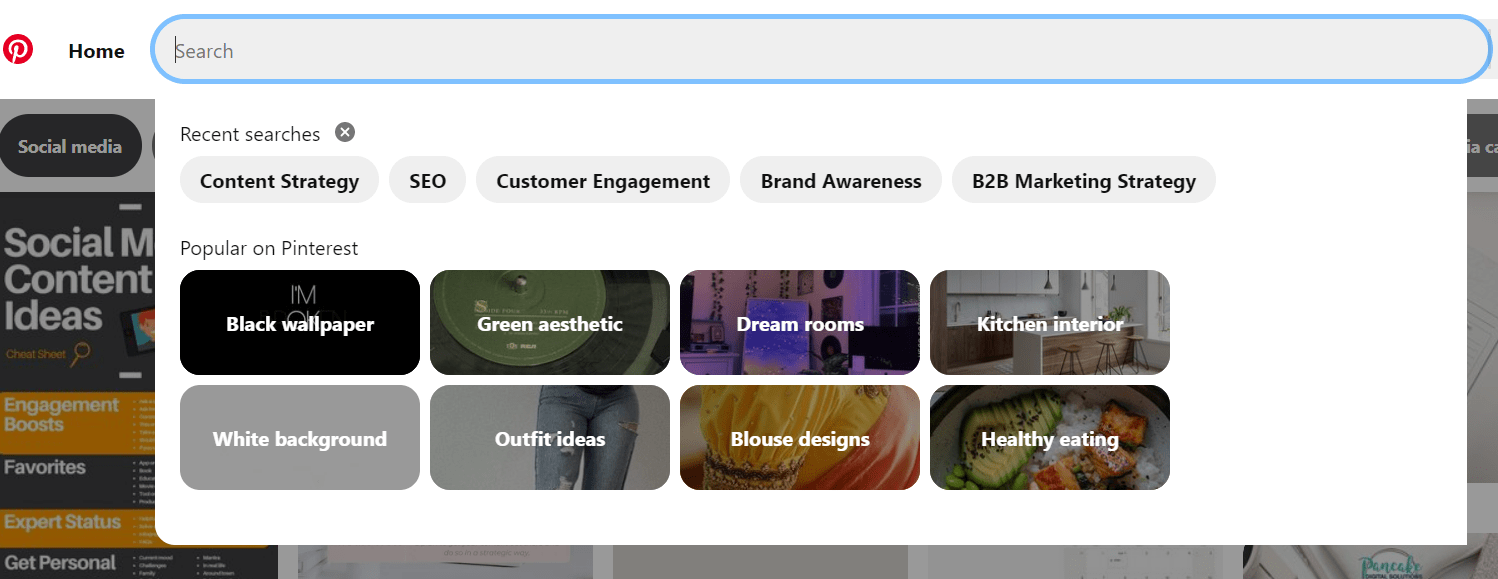
Of course, this alone won't do. So, another Pinterest marketing tip would be to create a holistic B2B Pinterest marketing approach that will include keyword targeting. After all, the algorithm is there to rank pins and boards based on relevancy, first and foremost.
But SEO doesn't stop there, so here are some more Pinterest marketing tips that will help you boost your content:
- Don't forget your hashtags.
- Use Google Analytics to determine the keywords that lead users to your B2B website, brand, content, or even your LinkedIn page and social network.
- Use keywords and keyword variations on your Pinterest bio and alt-texts of images.
Look how we, at Moosend leveraged Pinterest's power:
Your Pinterest Page, Influencer Marketing, and Overall Engagement
Engaging with others and building connections with Pinterest users, influencers, other B2B brands, and SMBs will make you seem human and relatable. After all, only by showing your human face will you attract humans and create brand loyalty.
Let's see what strategies would turn your Pinterest page into a powerful part of your B2B marketing strategy.
#1 Your Content
A general rule of thumb is that relevant and well-curated content that is released in regular intervals always wins the race. Even as a B2B, you're still talking to a human behind the business, and this human would love to see something they could use to solve an actual problem in their business.
Create interactive content, videos with customer testimonials, and pins that are engaging, albeit business-oriented. But don't be too original.
But how are you going to find that content?
#2 Up Your Following Count With Similar B2B Marketers and Brands
In other words, it's best if you let your user base come to you.
To do so, check what brands target the keywords you want to target. The same goes for influencers in your niche. If you're in the travel business and you'd like to promote the services you approach hotel owners, for example, you could start by following those owners and influencers.
Follow some accounts with a high follower count, make sure your niche is similar - if not the same - and, after that, plan an outreach strategy to team up with them and get the best results. Your repins alone will get the Pinterest users' attention and will help them find you.
#3 Engage to Get Engagement
Now, on Pinterest specifically, users who pin your content should have something to work with. And I'm not talking content-wise alone. As a B2B brand, a business account will allow you to DM users who have interacted with your pins.
Now, here's where the thing gets tricky, as you want interaction, but you want to reduce the creep factor of this interaction to zero, while also you want your message to mean something and drive more engagement.
To achieve that and create a content matrix that will drive more conversion, consult your user persona templates first and see what they have in common with the followers who have interacted with your content. Then, craft a "Thank You" message that will feel personal and personalized. And of course, keep in contact with them, with links, eBooks, and lead magnets that will lead to your website.
That way, you'll be able to nudge them gently towards your email list, have them subscribe for some valuable insights - or even exclusive benefits - and keep a loyal following of Pinterest users and, perhaps, influencers and thought leaders as well.
Another form of engagement - a great one at that - is a group board. Pinterest allows B2B marketers to create a board that's meant to be shared around. You can team up with those who engage most with your content and share ideas on this board, have them add their pins, and turn them into brand ambassadors in no time.
#4 B2B Marketing and Metrics
B2B marketing campaigns for Pinterest are still marketing campaigns at the end of the day. And without some powerful tracking and analytics, you won't know whether your tactics are working or not.
What you need to do is to track your performance, as this will help you reach your goals and KPIs. So, what are the KPIs you've set before building your first board? If you can't answer this question, you need a better approach to your marketing strategy as a whole. On the other hand, if you're not sure what your KPIs should be, maybe you should ask the key demographic that frequents your niche.
Consider creating a survey and asking them what they would like to see from your brand, content-wise, and utilize the information to adjust - or even create - your goals and determine where your main interest is.
After doing so, track your results, from the first pin to the very last board you create.
Of course, your Pinterest analytics will give you a better idea of the content that converts best for your audience as well. Which is a fantastic starting point, as you'll know what works best. Is it a GIF? Is it an infographic? Your analytics will give you the answer.
#5 Repurpose, Repurpose, Repurpose
So, what visual element would boost your conversion marketing tactics? Consider creating an infographic out of a blog post. Or a video out of an infographic. Or, perhaps, a GIF out of a video. If you're all out of ideas or want to constantly have a new approach when it comes to old content, Pinterest is the platform to do it.
Just create a content calendar and see the content types that would best meet your needs. If you're creating a content upgrade for your latest blog post, for example, consider adding its cover image on a Pinterest board. Top it off with the link to your blog post, and you're sure to catch two birds with one stone: an engaged reader and a lead for your email list, all into one.
B2B Pinterest Marketing: The Strategic Approach
In brief, you will need to optimize, experiment, be consistent, and never forget what a good quality visual can do for your brand. Now, let's get into more detail.
#1 Pinterest Search Optimization
The first thing you need to optimize for Pinterest's search engine should be your username. You see, most of the time, Pinterest users - like me - have a general idea of what they're looking for. Therefore, we'll use a variety of terms. So, why not look for the most prominent of those terms and use it in your username? This will give you better chances of appearing on a person's Pinterest search.
The same effort would have to go to your Pinterest boards and your pins. Finding long-tail keywords and leveraging them in a way that will make your content visible is a great way to gain popularity and, ultimately, boost your conversion rate and ROI. Because, as they say, "When a tree falls to the ground, and there's no one there to see it, did it really fall?". Or something similar.
So, optimizing your boards and pins and using the right keywords will boost your visibility and your chances of getting noticed. Serpstat has all the necessary long-tail keyword research tools to raise your marketing game:

#2 Pinterest Experimentation
Timing is tricky, and experimenting with different pins and time zones is not as creative. Still, it could be just as rewarding, depending on your target market, time zones, locality, and so on.
Let's assume that you had a B2B product that works beautifully with eCommerce and retail, but your customer is unsure of how to kickstart their business with your product. If you're going to use a guide to give them the specifics, you will need to make sure to post it during a time of day that works for them.
Experiment with timing to find the perfect timezone and come up with the results that best meet your needs. Also, take a look at that here:
#3 Be Consistent
First of all, why would the algorithm show your content - no matter how good you were at keyword targeting, no matter how smart your hashtag game was - if you don't post content regularly? This doesn't show value.
Secondly, being inconsistent with your posts and brand won't have any followers engaging with your content anyway. Users don't remember brands that don't make an effort to produce content. It's kind of like doing SEO every now and then. Is it enough to get noticed enough and clicked on enough to get ranked on Google's top 10? The answer to that would be no.
#4 Good Quality Visuals
Would I be able to find just the right shade of red or the perfect infographic to get me inspired without the perfect quality images with the ideal dimensions that don't look too pixel-y or broken down? No.
And I wouldn't bother with those pins, either. Generally speaking, poor-quality visuals equals poor UX design. As our Head of Design at Moosend put it:
If you've got an image that didn't convert as well as you would have wanted it to, just check its size, make sure it's up-to-date with Pinterest's specs and your current content calendar, and go ahead and repost it.
Doing so would give you an advantage, as you'll get to test your content one more time and see what didn't work the last time. Did it fail because it simply didn't look right? Was it the product that wasn't as enticing? Or did your audience simply not notice due to non-optimal keywords and bad timing?
The Takeaway
You see, consumers - whether they're B2B or B2C customers - are ultimately all humans. And the point is not the product itself, but what the product can do for them. So, by showcasing the brand's personality and unique tone of voice, you can show the experience they can have with your brand.
After all, as we said in the very beginning, a big chunk of Pinterest users turn to the platform to discover a new brand. Your unique tone and content are the elements they want to bump into.
Expert software, like a robust email marketing platform, free video editing software and image editing tools - if you're just starting -, or a powerful content creation tool and management system are the elements you want to invest into.
Providing value, a characteristic tone of voice, and positive brand culture and experience will make you memorable and keep you on top of your target audience's minds.
And with a little engagement, perfect imagery, and keyword targeting, you'll definitely make the most out of your B2B brand's Pinterest profile in no time.
Speed up your search marketing growth with Serpstat!
Keyword and backlink opportunities, competitors' online strategy, daily rankings and SEO-related issues.
A pack of tools for reducing your time on SEO tasks.
Discover More SEO Tools
Text Analysis Tool
Unlock the power of your text data with our advanced Text Analytics Tools
AI Content Detection
Ai Content Checker – realize if the text is AI-generated
AI Text Generator
Try our AI Content Writer tool and streamline your content creation process
AI Content Tools
AI Content Marketing Tools – simplify and optimize the content creation process
Recommended posts
Cases, life hacks, researches, and useful articles
Don’t you have time to follow the news? No worries! Our editor will choose articles that will definitely help you with your work. Join our cozy community :)
By clicking the button, you agree to our privacy policy.

